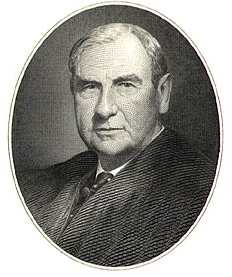 |
 |
| Chief Justice Harlan Stone |
| Stone Court: |
| Biography: |
| Major Cases: Korematsu v. United States 1944 (Epstein, 2001) |
| 12th Chief Justice of the United States Supreme Court |
| Born: October 11, 1872 in Chesterfield, New Hampshire Died: April 22, 1946 in Washington D.C. Education: 1894Amherst College, B.A. 1897 Amherst College, M.A. 1898 Columbia Law School Employment: 1898-1905 Faculty of Columbia Law School 1898-1899 clerk in a private law firm in New York City, New York 1905-1910 private practice in New York City, New York 1906 Dean and professor at Columbia Law School 1910-1923 Dean at Columbia Law School 1924 Attorney General of the United States 1925-1941 appointed Justice to the United States Supreme Court by President Coolidge 1941-1946 appointed Chief Justice of the United States Supreme Court by President Roosevelt 1946 died in office (Virtualology, 2002) |
| For five years Chief Justice lead the World War II Court Era. This era was marked with �increases in nonconsensual behavior (dissents and concurrences) among the justices.� (Epstein, 2001) It was also said that the Chief Justice Stone and Chief Justice Vinson were the least effective Court heads in terms of leadership abilities during the 20th century. (Schwartz, 1993) It was agreed that Stone was an excellent Justice and that is why they choose him to be the next chief justice but he just didn�t follow through. In the only major court case that he presided over during his time as chief justice was Korematsu v. United States. Korematsu v. United States had to deal with the Civilian Exclusion Orders, Korematsu refused to leave a military area and was therefore in direct violation of the Civilian Exclusion Orders which were put in place after the bombing of Pearl Harbor and would make anyone of Japanese heritage go to relocation camps. Even though in 1943 the Court stated: �Distinctions between citizens solely because of their ancestry are by their very nature odious to a free people whose institutions are founded upon the doctrine of equality.�(1993) One year after the Court made this decision, which Stone was apart of, the Stone Court still upheld the evacuation of the Japanese-Americans. A year after that in 1944 the Court in Ex parte Endo, ordered the release of Japanese-American from the relocation camps. (1993) Stone may had been ineffective during his time in the limelight, Vinson was actually considered the worst of the United States Supreme Court Justices. |